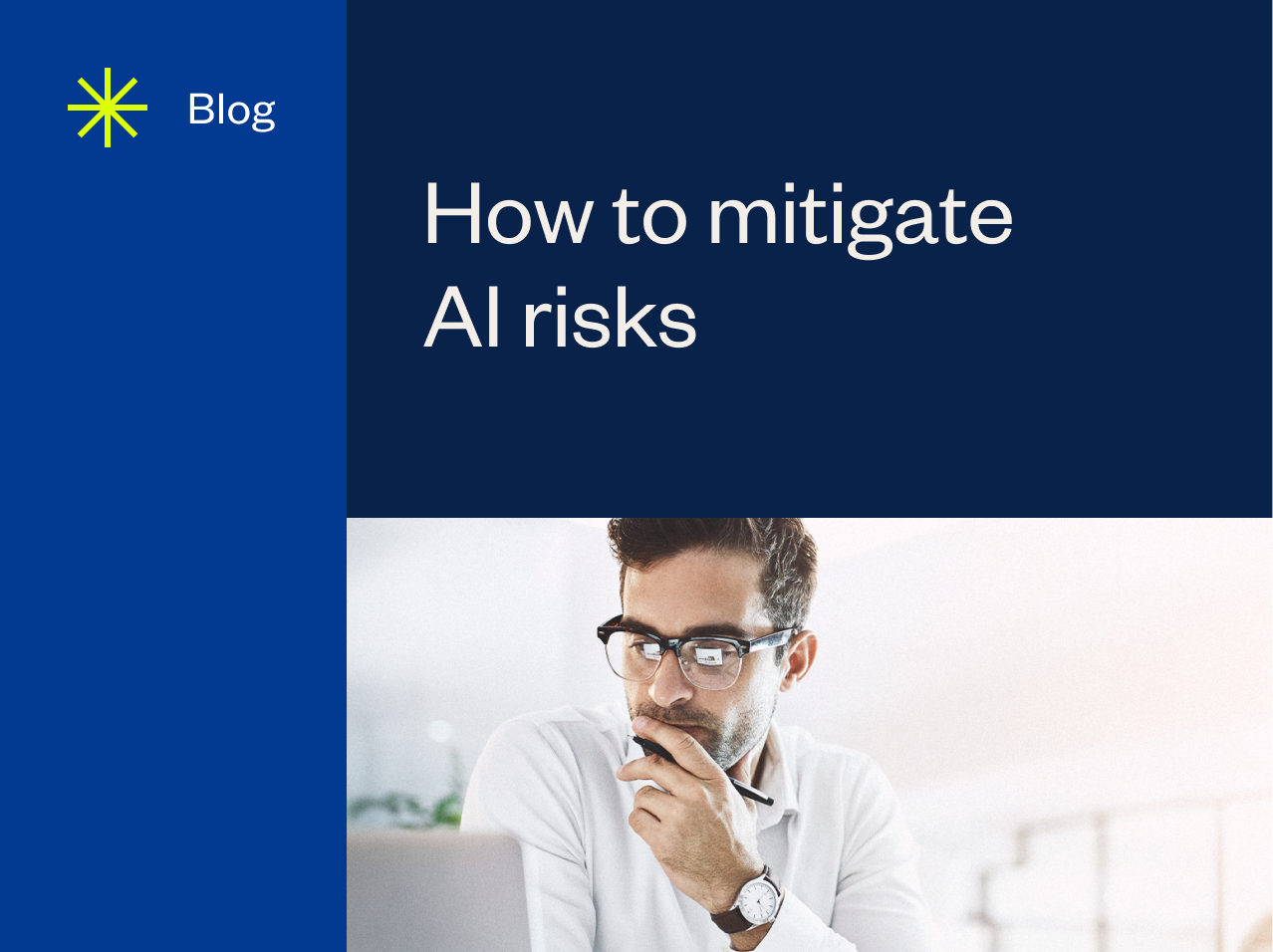How to Mitigate AI Risks: The CISO Blueprint

As Artificial Intelligence (AI) continues to be adopted on a large scale, organizations are expected to show responsible usage and ensure their systems can be trusted with sensitive information. Our 2025 Compliance Benchmark Report, featuring insights from over 1000 compliance professionals worldwide, shows that 90% of organizations have an AI compliance policy in place or are working on one. This means that most organizations are thinking about the role AI plays within their operations and are working on documenting and training their teams on acceptable use and guidelines.
It’s a transformative tool for businesses, but CISOs and IT teams need to understand the risks and set requirements for responsible adoption. In this article, we’ll go through the risks of AI tools and provide practical tips to mitigate risks.
Key risks of AI tools
While AI offers significant opportunities, it introduces serious risks to data privacy and security. These are the major risks that your organization needs to be aware of:
AI learns from user input
By default, AI chatbots, like Chat GPT or Gemini, use a language learning model (LLM) to train themselves on information that is put into their system. When employees use personal accounts to access AI tools, they could inadvertently be training AI on sensitive client data or intellectual property.
AI reduces control over data
What happens to the data once it’s put into AI systems? Many AI tools, especially free versions, share information with third-party models without explicit consent, increasing the risk of data exposure and loss of control over the information.
AI threatens data privacy
If a user shares client data with an AI tool that doesn’t isolate data or ends up sharing it with a third-party model, the company is at major risk of violating privacy agreements, which can lead to its own set of legal problems.
AI complicates compliance efforts
Use of unregulated AI tools can cause inconsistencies in your organization’s compliance practices. Without policy and procedures to manage which tools are approved, it is easy for the problem to get out of hand quickly, leading to timely and costly overhaul down the road.
How companies can adopt AI responsibly
AI tools have risks, but there are effective strategies to manage them responsibly.
Establish an AI steering committee
Forming a steering committee is the key to guiding responsible AI adoption. A steering committee oversees both the internal and external use of AI tools, creating policies to mitigate the associated risks and educate its users.
The most effective steering committees are formed of stakeholders across the organization, and they work alongside AI initiatives rather than being gatekeepers of them. Including stakeholders from different departments helps drive the adoption of AI and ensures that all users understand how to mitigate the risks when using these tools. They support overall goals while ensuring new AI initiatives comply with regulatory standards. This keeps executives and investors happy and facilitates the strategic integration of AI across the organization.
Create an AI usage policy
It’s important to establish a policy to protect your company from liabilities that can come from using AI. This policy will serve as a guideline for how your company implements AI and ensures responsible usage. It’s also a crucial element for AI frameworks and regulations like ISO 42001 and the EU AI Act. Check out our AI Policy Template to learn the key elements and information to include.
Implement internal governance
Establishing governance around the tools used internally can help bolster AI security efforts. Here are steps you can take to proactively mitigate risks and get control over your company’s AI usage:
- First, get an inventory of all the AI systems that are being used throughout the company. Figure out what these tools are and what they do.
- Next, perform a basic AI impact assessment on each tool. This will help you determine the risks and benefits of each tool so you can decide if it’s worth keeping.
- From there, verify the security controls of each AI tool to determine if the service encrypts and isolates your company’s data from others. In many cases, you will need to purchase corporate licenses to enable security and privacy controls.
- Once you’ve gone through the first three steps, decide which tools will be sanctioned and which will be blocked. It’s highly recommended to establish a white-list only approach to new AI tools, meaning that by default all new AI tools are blocked unless they are requested by stakeholders, have a valid business justification, and undergo a required AI Impact Assessment.
- Finally, you should have an open conversation with the leadership team to get an understanding of which tools people use and value. Always be open to expanding the internal AI toolkit, as long as there is business justification as to why the sanctioned tools can’t be used.
Eventually, as your AI Usage Program matures, you can incorporate data loss prevention (DLP) to monitor the type of data that is being put into these systems. This involves classifying the data and defining what information is sensitive, confidential, and allowed to be inputted into the AI tools. This will allow you to safeguard your data and manage AI adoption at a high level.
Build your security around ISO 42001
ISO 42001 has become the leading standard for AI compliance, with major companies like Microsoft and Google racing towards certification. Even if your company isn’t planning on getting certified just yet, basing your security around ISO 42001 will facilitate faster certification if you start to receive pressure for it. Supply chains are already starting to favor those that have certification beyond just a simple trust document, so aligning with ISO 42001 can help give your organization a competitive advantage.
If you’d like to learn more about AI best practices and implementing ISO 42001, you can contact us here.
